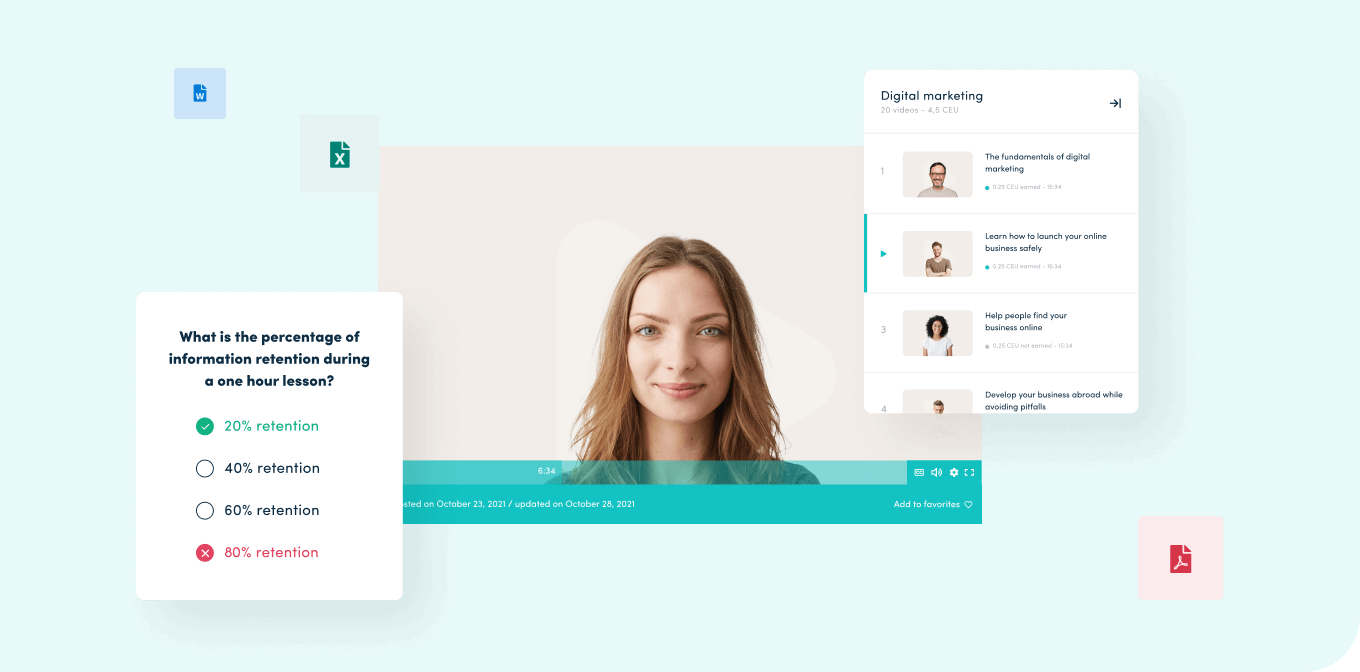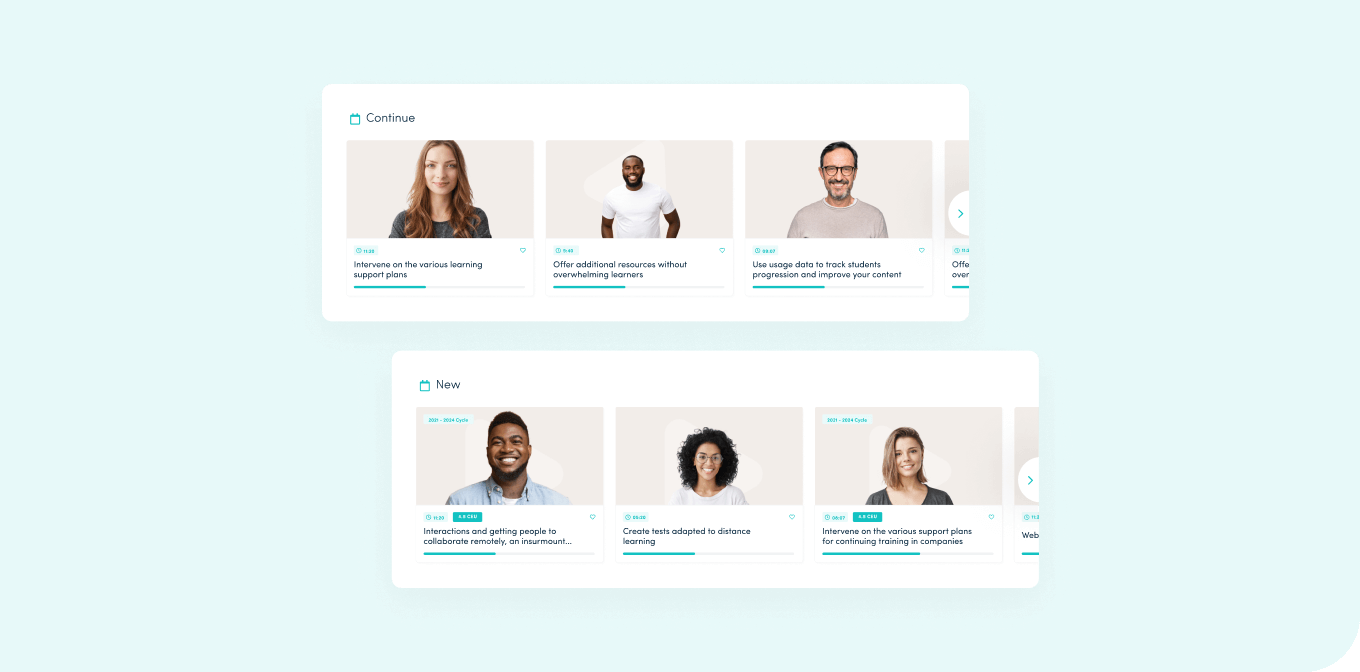In the age of pervasive information technology, our attention and focus are constantly compromised by saturation of stimuli. This results in an additional difficulty in dedicating our time, already limited, to developing our professional skills.
Micro-Learning as a Solution
Micro-learning can seem complex at first glance due to its belonging to a nested field of technology. However, this is not necessarily the case. One need only grasp the essence of its approach to understand that it is more of a process facilitating knowledge acquisition.
So, What Exactly Does it Entail?
While there is no real consensus on what micro-learning is, one thing everyone agrees with is conciseness. Regardless of the learning activities’ format, this approach sets itself apart by the fragmentation of its content. It gives way to a progressive, step-by-step learning experience, allowing the acquisition of new knowledge at the desired pace.
The Various Forms of Micro-learning
Without even realizing it, you have probably already made use of this type of learning. Indeed, it comes in several forms that are part of your daily technological life. Here are a few examples:
- They can relate to one or more topics and aim to capture the attention and interest of users.
- Relevant Images
The visual content enhances the explanatory information made available to users. - Explanatory Texts
The textual portions are necessary for a better understanding of the subjects studied. - Quizzes
Quizzes are an effective way to assess information retention.

Counteract Sources of Distraction
It’s no secret that today’s society pushes us to a hectic pace of work, requiring us to learn and assimilate a wealth of information quickly and from multiple sources. Faced with this challenge, we must use the relevant tools so that learning takes place in a fluid and progressive manner. Micro-learning is, therefore, a tool of choice for anyone wishing to achieve their learning objectives in their sector of activity.
Our schedule is busy, micro-learning allows learning adapted to our rhythm of life. Indeed, this educational technique is easy to integrate into one’s schedule since it fragments concepts into short-term modules. As a result, the content presented is easier to remember and understand and leaves room for better learning.
Micro-learning, an Asset?
Micro-learning is a learning formula that offers several advantages. Here are a few:
- Affordable
The costs of producing, carrying out and implementing a micro-learning type course are not as high as one might think. Indeed, micro-learning is much less expensive than a face-to-face course or an e-learning course, for example. It stems in part from the fact that micro-learning, as the name suggests, uses short segments. - Engaging
Micro-learning is one of the most interactive and attractive learning methods for learners. Due to its versatile and digital form, it differs from the traditional learning formula. Indeed, users often feel that micro-learning is more akin to a pastime than a responsibility requiring rigid attendance. - Quick implementation
Since these are short capsules requiring less content to prepare and write up front, micro-learning allows you to create a complete course with several units very quickly. At the same time, it enables organizations to adjust their goals as the market changes and produce different courses in a short time. - Flexibility
Micro-learning also has the advantage of containing the same elements as a standard course. Here, we tackle these subjects both on the surface and in-depth. This formula allows you to update your knowledge remotely, whenever you want, no matter where you are. In addition, the small size of the micro-learning courses allows them to be more easily downloaded and consulted, even when an Internet connection is not available. - Retention
Repetition is a critical factor in withholding information. The short duration of the capsules allows users to listen to them repeatedly and thus better understand the information presented.

What you should know before using micro-learning:
- Make Sure this Formula Suits your Needs
Micro-learning is more effective when it comes to easily assimilated topics. If you want to tackle rather specific or complex subjects or themes, it is more appropriate to use a traditional learning approach, such as face-to-face lessons. - Adapt Your Content
It is not enough to use your content as-is for micro-learning. It must be adapted to this new format to achieve the desired effect. You may also add unique elements to make your content more dynamic. - Use Multimedia Elements
Whether it’s illustrations, photos, videos or even animation, the use of multimedia elements not only makes your content aesthetically pleasing but also more interactive. At the same time, the occasional appearance of quizzes keeps users’ attention, and the system can closely monitor their progress and understanding.
You’re All Set!
Now that you’re more knowledgeable, you can embark on the creation of your first micro-learning content.







